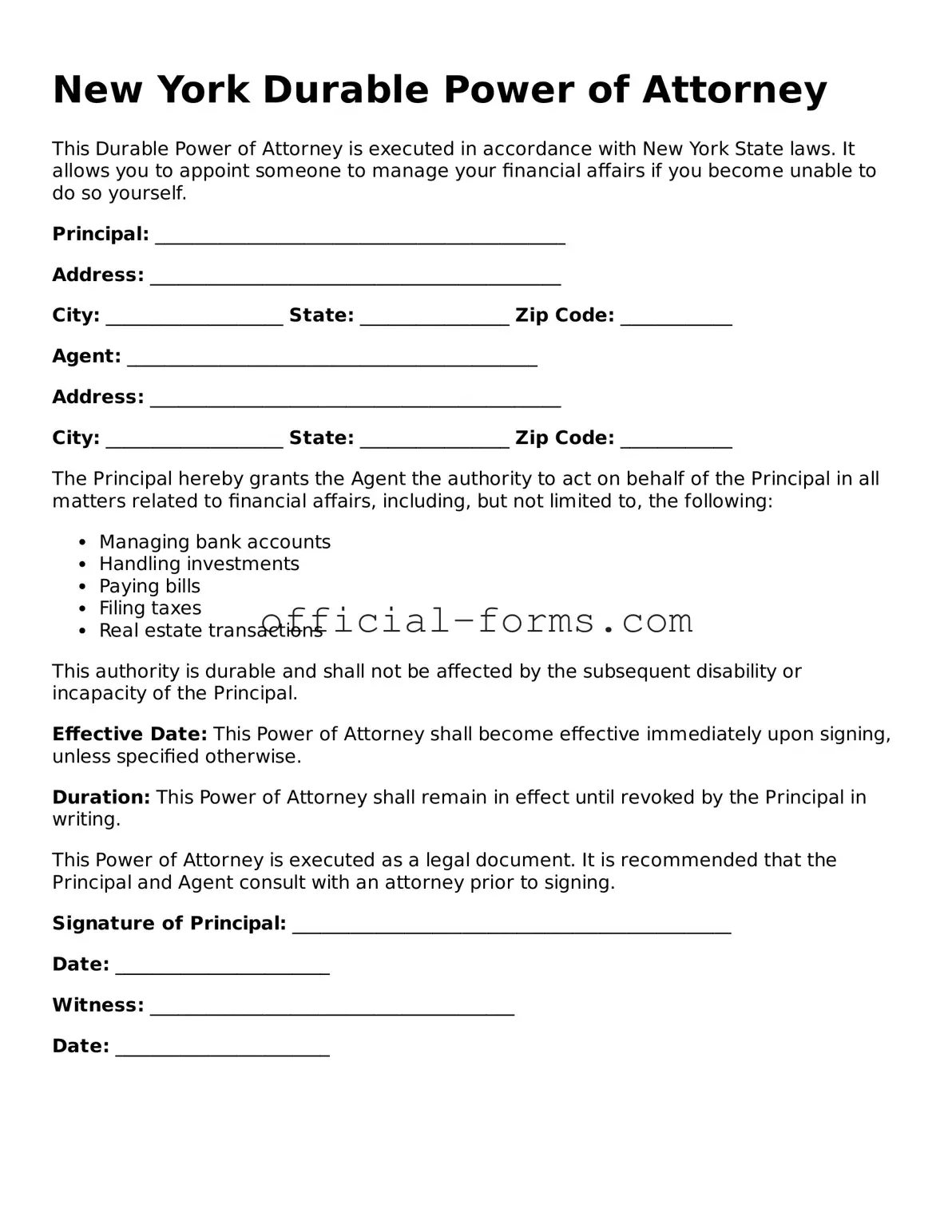Filling out the New York Durable Power of Attorney form can be a straightforward process, but many individuals make common mistakes that can lead to complications. One frequent error is failing to properly identify the principal. The principal is the person granting authority. If their name is misspelled or incorrect, it may invalidate the document.
Another mistake occurs when individuals overlook the need to clearly designate an agent. The agent is the person who will act on behalf of the principal. Without a clearly defined agent, the document lacks the necessary authority to be effective. It is essential to provide the agent's full name and address to avoid confusion.
Some people neglect to specify the powers granted to the agent. The form allows for broad or limited powers, and failing to clarify these can lead to misunderstandings later. It is important to outline the specific decisions the agent can make, ensuring that the principal's wishes are accurately represented.
In addition, individuals sometimes forget to date the form. A date is crucial for establishing when the authority begins. If the form is undated, it may be challenged or deemed invalid, leading to potential legal disputes.
Another common error is not having the form properly witnessed or notarized. New York law requires that the Durable Power of Attorney be signed in the presence of a notary public or two witnesses. Without this step, the document may not hold up in court.
People also often fail to keep copies of the completed form. Once the Durable Power of Attorney is executed, it is important for the principal and the agent to have copies for their records. This ensures that the agent can act when necessary without delays.
Additionally, some individuals do not review the form for completeness before signing. Missing signatures or incomplete sections can render the document ineffective. A thorough review can prevent these oversights.
Another mistake involves not discussing the powers granted with the agent beforehand. Clear communication about the principal's wishes is vital. Without this discussion, the agent may not fully understand the principal's intentions, leading to potential conflicts.
Lastly, people may underestimate the importance of regularly updating the Durable Power of Attorney. Life circumstances change, and so do relationships. It is advisable to review and, if necessary, revise the document periodically to ensure it remains aligned with the principal's current wishes.
